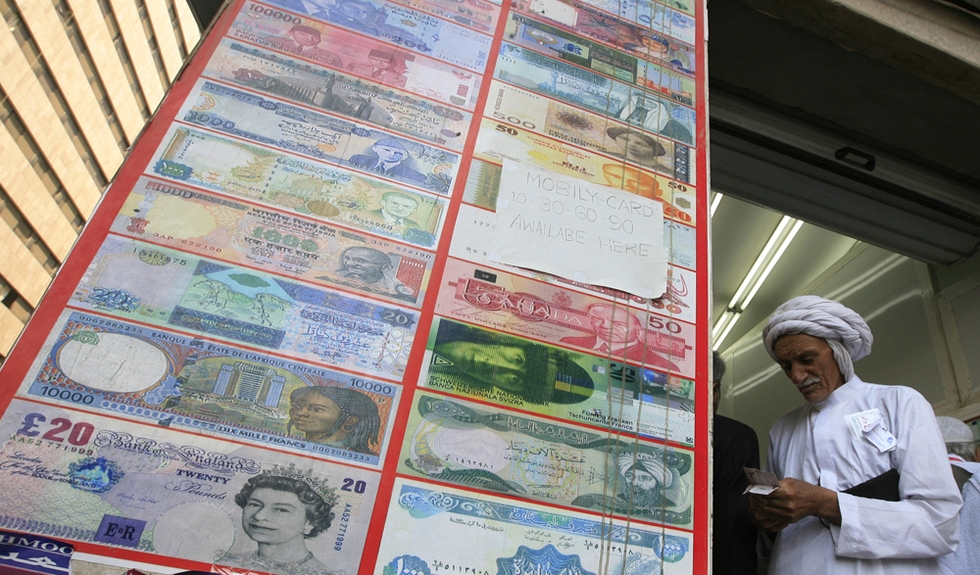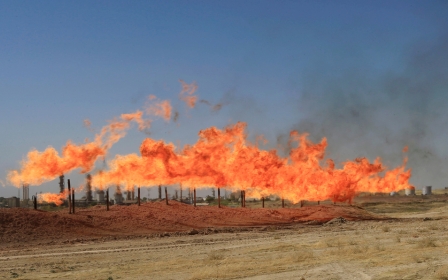ANALYSIS: Middle East economies trend upward as war against IS winds down

Things are looking up in the Middle East.
Despite the long war against the so-called Islamic State (IS) group, the outlook for much of the region looks brighter.
Three broad factors are behind it: a rise in the price of oil to sustainable levels, a victory in the war against IS itself and improvements in credit availability, analysts say. There are some factors that are specific to individual countries as well.
Oil buoys the region
“The big story is that oil is helping,” says Win Thin, global head of emerging market currency strategy at Brown Brothers Harriman in New York. “OPEC extended the production cuts and $60 a barrel price range is a nice spot for everyone,” both importers and exporters.
OPEC is the Organisation of the Petroleum Exporting Countries, which recently agreed to production cuts of crude oil in order to help support prices.
The big story is that oil is helping
- Win Thin, global head of emerging market currency strategy at Brown Brothers Harriman
Such cuts have helped stabilise the price of crude which as recently as early 2016 traded below $30 a barrel. Brent crude, which is the European benchmark price, was recently trading at $63, which is a level that is high enough for the major exporters to be happy and not so high that it starts to economically damage major importing countries.
The immediate primary beneficiary countries are the big exporters who tend to rely heavily on oil money. In declining order of volume, they are Saudi Arabia, Iraq, United Arab Emirates (UAE), Kuwait, Iran and Qatar, according to data from the CIA World Factbook. The additional oil revenue should flow straight into the coffers of those governments, with those further up the list doing better than those lower down.
However, when the oil revenue in the region increases, even those countries that are not major oil exporters do better because cross border trade tends to do better when the petro-dollars flow. Such international trade is also getting a leg up from the defeat of IS.
Better security
“Security is improving and the war on ISIS is over,” says Garbis Iradian, chief economist for MENA at the Washington DC-based Institute of International Finance (IIF). That should help open the trade routes between Syria and Iraq, he says.
That means there should be more cross-border trade across the part of the region that saw the war against IS. It is something of an economic law that more trade tends to benefit all economies that are involved. It is also a given to most economists that war doesn’t improve any economy over the long term. It is a good sign, as long as the relative peace in Iraq and the surrounding areas can be kept.
Security is improving and the war on ISIS is over
- Garbis Iradian, chief MENA economist for Institute of International Finance
Iradian, the economist at IIF, doesn’t rule out the occasional attack or bomb blast, but says “the worst is over”.
Yemen's economy is both small and poor, according to government data. To put it in perspective, the Saudi economy is $646bn versus $27bn for Yemen. Saudi's economy is more than 20 times the size of Yemen's. And on a per capita basis Yemen is a poor country - $2,400 a year using local purchasing costs. Although the war is a humanitarian crisis, it has had little effect on the economies of the neighbouring countries because the economy is so small.
Better credit
A recent IIF report shows that overall the credit situation is improving for the Middle East and North Africa. Notably, there was a marked improvement in trade finance.
“Overall, lending conditions are expected to improve for [the fourth quarter of 2017],” the report states. It doesn’t break down the data for specific countries.
If the financial crisis of 2008-2009 taught the world anything, it’s that the world of business needs credit to operate. When credit flows freely then there is more business activity. But more important for people who want to know where the economies of the region are going, the availability of credit is a leading indicator. That means that when credit becomes more easily available then economic activity is likely to rise shortly thereafter.
The favourable report should mean a likely improvement in credit across the region with more loans to businesses who will then expand their current operations and so boost the economy.
Other country-specific factors
Iran is still benefiting from the 2016 US-led move to lift economic sanctions.
“In 2016, the [Iranian] economy registered a strong oil-based bounce back, with an annual headline growth rate of 13.4 percent, compared to a contraction of 1.3 percent in 2015,” states an October 2017 report from the World Bank. “The largest contribution to growth was from the industry sector (at about 25 percent) as oil and gas production increased by a staggering 62 percent, mainly as a result of sanctions relief.” In addition, the non-oil sector grew at 3.3 percent, the fastest rate in five years, the report adds.
However, there is still some uncertainty about whether the recent growth spurt will continue.
“Iran all hinges on what [the US] Congress decides about whether there will be new sanctions,” says IIF’s Iradian. However, there is a significant risk that the Trump administration re-imposes the sanctions early next year.
Such a move would most likely cause the Iranian economy to contract. It would also push global crude prices higher, benefiting the other exporters in the region.
Meanwhile, Egypt’s economy is benefiting from economic reform and the recent receipt of an International Monetary Fund loan.
Early last month the Egyptian government and the IMF reached an agreement for a $2bn tranche of a $12bn three-year loan programme. It brings the total received from the IMF to $6bn. Future instalments are contingent on continued introduction of economic reforms. The country has already floated its exchange rate, introduced value-added taxes and slashed energy subsidies.
Other public-sector loans have been forthcoming from the World Bank and the African Development Bank. Britain chipped in as well.
The result has been increased flows of private sector cash into the economy, says BBH’s Thin. In part, the IMF and other loans are boosting investor confidence. But another part of it is the high yields offered on Egyptian money. The overnight deposit rate set by Egypt’s Central bank is now 18.75 percent, which is far higher than that available on US dollars. The Federal Reserve benchmark rate was at 1.16 percent in November.
The increased capital flows should continue to boost Egypt’s economy, which just saw its factory sector start expanding for the first time since 2015.
New MEE newsletter: Jerusalem Dispatch
Sign up to get the latest insights and analysis on Israel-Palestine, alongside Turkey Unpacked and other MEE newsletters
Middle East Eye delivers independent and unrivalled coverage and analysis of the Middle East, North Africa and beyond. To learn more about republishing this content and the associated fees, please fill out this form. More about MEE can be found here.




